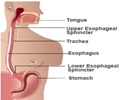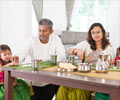Go easy on sweets and fireworks and make this a safe and healthy Diwali.
Come Diwali and vast sections of the Indian populace and the Indian diaspora in different parts of the world revel in a spirited delight of the senses and the soul. Be it the tantalizing tussle of festive clothes, the mouth-watering array of splendid sweets or the colorful and ear-splitting fireworks –Diwali is one celebration that lights up the religious, social and cultural life of the majority of the Indian community. A perceptive glance at certain health hazards hidden amid the feast of senses will probably help us make informed choices and get the most out of the day’s festivities in a healthy way.
Sweet SurrenderCounting calories becomes the biggest challenge as the heady fragrance of ghee and oil announce sweet temptations such as laddus, jilebis, and milk halwas. Though Diwali comes once a year and a diet routine would play spoilsport, remember that ethnically Indians are prone to diabetes and need to consciously cut down on sugar and starch. If you want to gorge on your favorite sweet dish dripping with ghee, then a good strategy would be to go lighter on the festive breakfast and lunch or vice versa. Do not forget to take a generous helping of the “Diwali lehiyam”—the traditional antidote to indigestion straight out of grandma’s medicine cupboard (now available in Indian medical and “sweet” shops) made of herbs and healthy spices. Pop an antacid if your heartburn is crying for immediate attention.
Fireworks—Sound and Light Fury
At the crack of dawn on Diwali day, people wake up for the ritual oil bath followed by a flurry of festive clothes, a solemn worship and then it’s onto noisy firecrackers that scare the living daylights out of those who wish to linger in bed for a little while longer. The Supreme Court of India has prescribed a limit of 125 decibels to prevent noise pollution and has also prohibited setting off fire crackers in the silence zones –areas within 100 meters of hospitals, educational institutions, courts and religious places.
A study conducted by the Central Pollution Control Board (CPCB) found 96 percent of the four major brands of fireworks surveyed, violated the noise and air pollution norms. Apart from the smoke aggravating asthma and respiratory problems, noxious pollutants like Respirable Suspended Particulate Matter (RSPM), Nitrogen dioxide and Sulphur dioxide emanating from firecrackers call for a Diwali with less bang and smoke.
Environmental awareness campaigns are beginning to make an impact on reducing the effects of Diwali noise and air pollution. Public display of fireworks at a particular place at the community level as is done in developed countries is yet to take off in India. True, Diwali is synonymous with firecrackers but pollution and burn injuries tend to take the wholesome fun out of the celebration.
Wear slippers while firing crackers and do not use residue powder from used or left over firecrackers because even 2 grams of the powder can cause an explosion and severe burn injuries. Children need adult supervision while burning firecrackers and it’s wise to have a bucket of water and some sand in case of an emergency.
Pan Indian Festival for Sharing and Bonding
Like all other festivals, Diwali is an occasion to spend time with family and friends and reaffirm relationships. We live in an age when people are getting socially inept and prefer to stay rooted in front of screens—TV or computer! Diwali is a good opportunity to socialize as well as familiarize youngsters with Indian customs and culture.
So go ahead and have a healthy blast this Diwali and while you’re at it, spare a thought for the needy and the less privileged and contribute to some good cause in order to lend meaning to this festival of light—Diwali!
Source-Medindia
Thilaka Ravi/L















